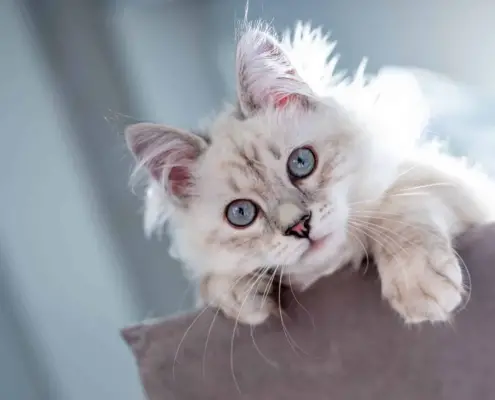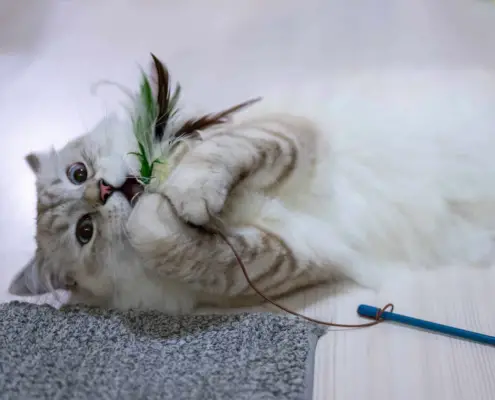
Cats are fascinating creatures with unique anatomical features that set them apart from other animals. One such feature that piques the curiosity of many cat owners and enthusiasts is their toes. Have you ever wondered how many toes cats have? In this article, we will delve into the world of feline anatomy and explore the intricate details of a cat’s paws and toes.
The unique anatomy of cats’ paws
A cat’s paw is a marvel of nature. It is designed to provide optimal balance, agility, and hunting prowess. Each paw consists of five toes, which are the equivalent of fingers in humans. These toes, or digits, are connected to the main body of the paw by a series of bones, ligaments, and muscles. The structure of a cat’s paw allows for a wide range of motion and flexibility, enabling them to climb, scratch, and capture prey with precision.
Understanding the structure of a cat’s toe
Each toe consists of several components, including bones, joints, tendons, and claws. The bones in a cat’s toe are known as phalanges, and they are similar to the bones in our fingers. These small bones are connected by joints, which provide flexibility and allow the cat to move its toes independently. Tendons, on the other hand, connect the muscles in the cat’s leg to the bones in its toes, enabling it to control its movements with precision. Finally, the claws, which are retractable in cats, serve multiple purposes, including hunting, self-defense, and climbing.
How many toes do cats typically have?
Now, let’s address the burning question: how many toes do cats typically have? Most cats have a total of 18 toes – five on their front paws and four on their hind paws. However, this is just the average number, and there can be variations among individual cats and different cat breeds. To determine the exact number of toes your cat has, simply count them. Gently hold your cat’s paw and observe the number of visible digits. Remember to be cautious and handle your cat’s paws with care, as they are sensitive areas for them.
Variations in toe numbers among different cat breeds
While most cats have 18 toes, there are some fascinating variations in toe numbers among different cat breeds. One such variation is polydactylism, a genetic mutation that results in cats having extra toes. Polydactyl cats, also known as “Hemingway cats” or “mitten cats,” can have up to 28 toes! This condition is more prevalent in certain cat breeds, such as the Maine Coon and the American Bobtail. The extra toes in polydactyl cats are not just for show; they provide them with enhanced dexterity, balance, and an adorable appearance.
The role of extra toes in cats – polydactylism
Polydactylism, or having extra toes, is not just a quirk of nature; it serves a purpose for cats. The additional digits in polydactyl cats provide them with an advantage when it comes to climbing, hunting, and even swimming. The extra toes increase their surface area, giving them improved stability and grip. This unique adaptation allows polydactyl cats to navigate challenging terrains with ease and excel in activities that require agility, such as catching prey or scaling trees. In addition to their functional benefits, the extra toes also make polydactyl cats incredibly endearing and sought-after pets.
Fun facts about cats’ toes
Here are some fun facts about cats’ toes that will surely amaze you:
- Cats’ toes are highly sensitive and contain numerous nerve endings, making them incredibly tactile.
- The pads on a cat’s paw act as shock absorbers, providing cushioning and protection while walking or jumping.
- Cats use their toes to groom themselves, and their tongues are not the only tool in their grooming arsenal. They lick their paws and then use their toes to clean hard-to-reach areas, such as their ears and face.
- Cats have a specialized toe called the dewclaw, which is located higher up on their leg. While this toe may not touch the ground when the cat is walking, it serves a purpose in providing additional grip and stability during certain movements.
- The toe beans, or paw pads, on a cat’s paw are not just adorable; they also help cats maintain traction and prevent slipping.
Caring for your cat’s paws and toes
Now that you have a deeper understanding of your cat’s toes, it is essential to know how to care for them properly. Regular paw maintenance is crucial to ensure your cat’s overall health and well-being. Here are a few tips to help you care for your cat’s paws and toes:
- Trim your cat’s claws regularly to prevent them from becoming overly long or sharp.
- Check your cat’s paws for any signs of injury, such as cuts, sores, or foreign objects stuck between the toes.
- Keep your cat’s paws clean by gently wiping them with a damp cloth, especially after outdoor activities.
- Provide your cat with appropriate scratching surfaces to help keep their claws in good condition and prevent them from scratching furniture or carpets.
- If you notice any abnormalities or changes in your cat’s toes, such as swelling, redness, or lameness, consult your veterinarian for a thorough examination.
Common toe-related health issues in cats
Despite their strong and resilient nature, cats can experience various toe-related health issues. Some common problems that can affect a cat’s toes include:
- Ingrown nails: When a cat’s nails grow too long or curl into the pads, they can cause pain, infection, or even difficulty in walking.
- Nail bed infections: Cats can develop infections in their nail beds, which may result in swelling, redness, and discomfort.
- Feline pododermatitis: This is an inflammatory condition that affects the paw pads and can cause pain, ulceration, and lameness.
- Toe fractures: Cats, especially those that are adventurous and active, can experience toe fractures due to accidents or falls.
- Nail bed tumors: Although rare, cats can develop tumors in their nail beds, which may require surgical intervention.
If you suspect any toe-related issues in your cat, it is essential to seek veterinary attention promptly. Early diagnosis and treatment can prevent further complications and ensure your cat’s comfort.
Conclusion
Cats’ toes are not just adorable and fluffy; they play a vital role in their overall well-being and functionality. Understanding the unique anatomy of a cat’s toe and the variations in toe numbers among different cat breeds adds to our appreciation for these remarkable creatures. By caring for your cat’s paws and toes and being aware of potential health issues, you can ensure that your feline companion enjoys a healthy and happy life. So, the next time you gaze at your cat’s paws, remember the intricate wonders that lie within and cherish the beauty of their toes.
Whether your cat has the average number of toes or is a polydactyl marvel, their paws and toes deserve proper care and attention. Take a moment to examine your cat’s paws, trim their claws if necessary, and provide them with a safe and enriched environment. Your feline friend will thank you with purrs and toe-taps of gratitude!
If you enjoyed my article, I would appreciate you sharing it with your network.

Sima Ndlebe
Sima writes for CatBuzz. He is interested in Cats, Health and Fitness, and Entrepreneurship.
Published: 13 November 2023



